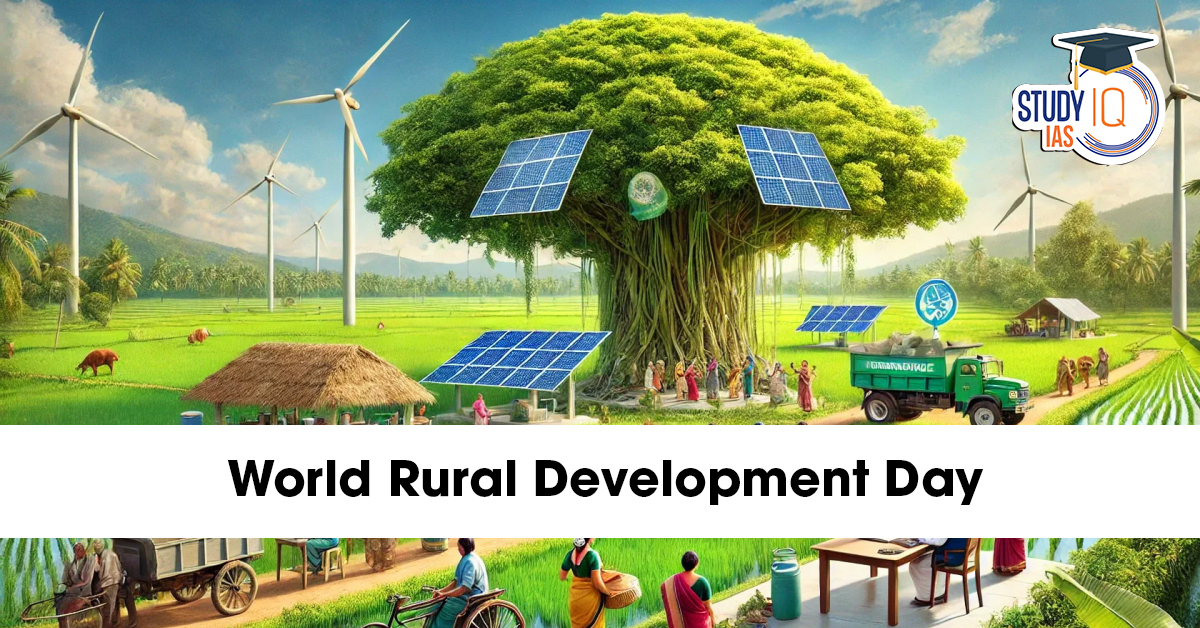Table of Contents
The first-ever World Rural Development Day was celebrated on July 6, 2025, as a global initiative to shine a spotlight on the living conditions in rural communities, where nearly 80% of the world’s poorest people reside. Spearheaded by the United Nations, this day emphasizes inclusive development—ensuring that no village or rural household is left behind in the race towards achieving the Sustainable Development Goals (SDGs) by 2030.
What is World Rural Development Day?
World Rural Development Day, observed on July 6, is a newly declared international observance by the United Nations. It is dedicated to highlighting the critical challenges faced by rural communities and promoting global action to improve rural livelihoods.
The first-ever observance took place in 2025, marking a significant step in the global effort to achieve the Sustainable Development Goals (SDGs) by 2030. It serves as a symbol of international solidarity with those living in rural areas, especially the poor, women, youth, and Indigenous populations.
Background: Why July 6 Was Chosen
The resolution passed by the UN is rooted in decades of international commitments such as:
-
The Universal Declaration of Human Rights
-
The Addis Ababa Action Agenda on Financing for Development
-
The 2030 Agenda for Sustainable Development
These global frameworks underscore the necessity of equitable rural development as a precondition for sustainable global progress. The declaration of July 6 as World Rural Development Day is not symbolic—it’s strategic. It aims to put the world’s 3.4 billion rural residents—especially women, youth, and Indigenous Peoples—at the center of global development efforts.
Why World Rural Development Day Matters
Rural communities are the backbone of global food security, climate conservation, and cultural heritage, yet they are disproportionately affected by poverty and exclusion. According to the UN:
-
80% of the world’s poorest people live in rural areas, many earning less than $2.15 per day.
-
Rural women make up 43% of the agricultural workforce, but face major barriers to land, credit, and technology.
-
Over half of rural populations lack access to healthcare, compared to just 22% in urban areas.
-
Internet penetration is less than 50% in rural areas, versus 83% in urban centers (ITU 2024).
These disparities affect food systems, education, health outcomes, and economic stability—making rural development a global priority.
Key Themes and Priorities of the UN Resolution
The UN’s resolution envisions a holistic, inclusive, and sustainable development model for rural areas. Its core themes include:
| Theme | Why It Matters | Example Actions |
|---|---|---|
| Ending Rural Poverty | Most of the extreme poor live in rural regions | Social protection, land reform |
| Food Security | Rural communities feed 80% of the world | Farmer cooperatives, sustainable agriculture |
| Digital Inclusion | Internet and digital finance unlock services and growth | Rural broadband, mobile banking |
| Gender Equality | Women face unequal access to land, tools, and leadership roles | Women-led SHGs, inheritance rights |
| Climate Resilience | Rural areas are on the frontlines of climate change | Agroecology, water management, drought-tolerant crops |
| Infrastructure Access | Roads, clinics, energy, and schools boost quality of life | Mini-grids, mobile clinics, school connectivity |
UN’s Vision and Approach
The United Nations promotes a holistic and integrated approach to rural development focusing on:
-
Economic empowerment through improved agricultural practices, market access, and income diversification
-
Social inclusion with special attention to women, youth, and Indigenous peoples
-
Environmental sustainability emphasizing climate-resilient farming and natural resource management
-
Digital and financial inclusion to bridge connectivity gaps
-
Infrastructure development including roads, schools, healthcare facilities, and renewable energy
Highlight: JEEViKA Project in Bihar, India
A notable example of successful rural development is the JEEViKA project in Bihar, India. Supported by the World Bank, this initiative organized 1.8 million rural women into self-help groups, resulting in a 30% increase in household incomes through credit access, sustainable agriculture, and improved market linkages. JEEViKA exemplifies how empowering women and fostering community-led development can transform rural livelihoods.
How to Observe World Rural Development Day
The UN encourages diverse stakeholders to engage in activities such as:
-
Organizing local awareness campaigns on rural issues
-
Hosting policy dialogues and forums on rural development
-
Sharing data and success stories through digital platforms
-
Promoting public-private partnerships to invest in rural infrastructure and innovation
-
Supporting grassroots organizations working on rural empowerment
Conclusion
The declaration of World Rural Development Day by the United Nations marks a pivotal moment in the fight against rural poverty and inequality. It symbolizes global solidarity and a renewed commitment to empowering rural people as essential contributors to sustainable development, food security, and climate action. Every July 6, the world will unite to highlight rural issues and accelerate efforts toward a more equitable future.


 World Summit on Disaster Management (WSD...
World Summit on Disaster Management (WSD...
 Domestic Systemically Important Banks (D...
Domestic Systemically Important Banks (D...
 The Missing Link in India’s Critical M...
The Missing Link in India’s Critical M...

























